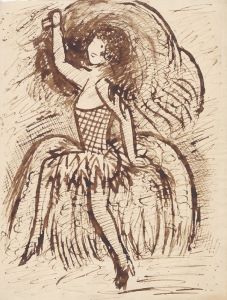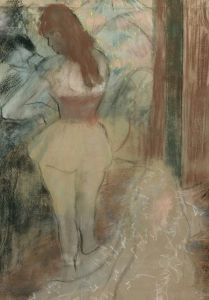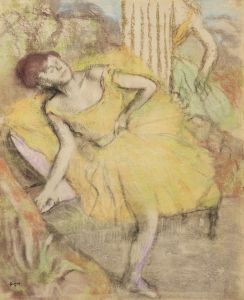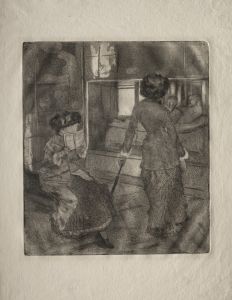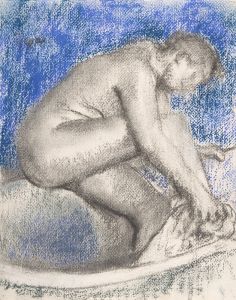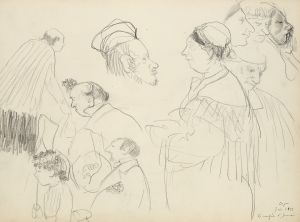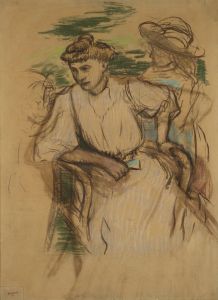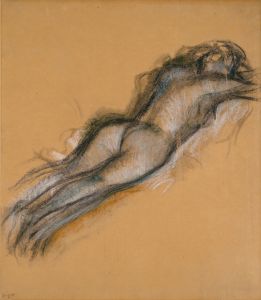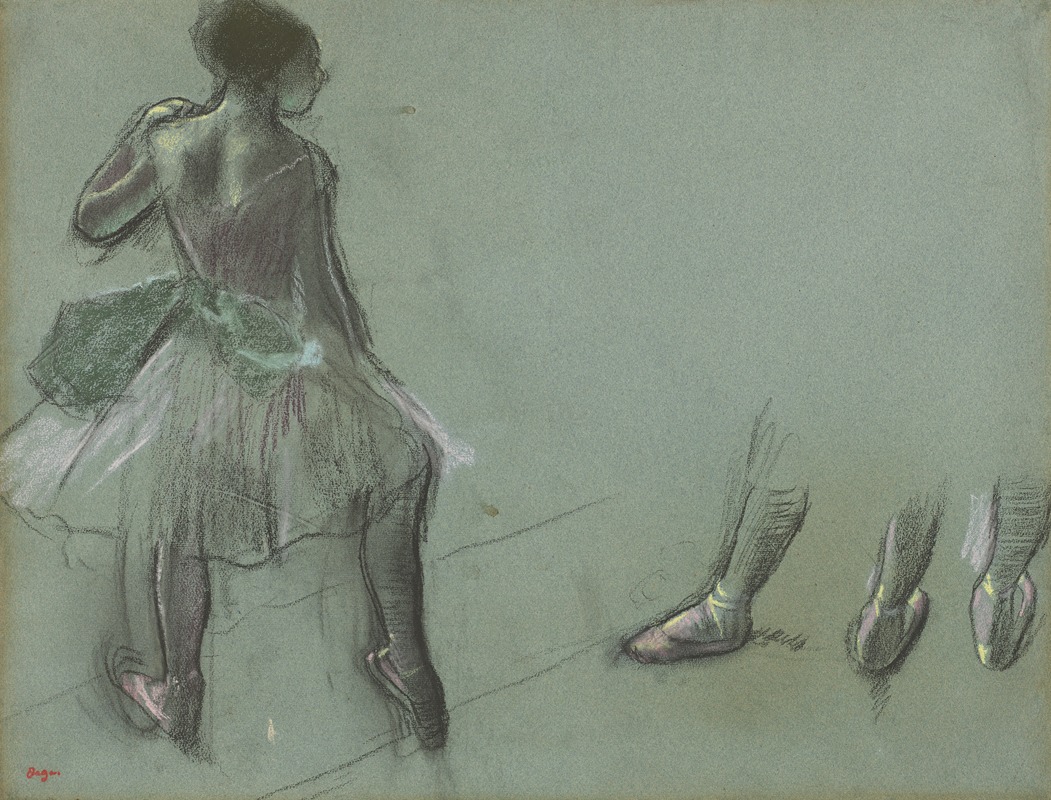
Dancer Seen from Behind and Three Studies of Feet
A hand-painted replica of Edgar Degas’s masterpiece Dancer Seen from Behind and Three Studies of Feet, meticulously crafted by professional artists to capture the true essence of the original. Each piece is created with museum-quality canvas and rare mineral pigments, carefully painted by experienced artists with delicate brushstrokes and rich, layered colors to perfectly recreate the texture of the original artwork. Unlike machine-printed reproductions, this hand-painted version brings the painting to life, infused with the artist’s emotions and skill in every stroke. Whether for personal collection or home decoration, it instantly elevates the artistic atmosphere of any space.
Edgar Degas, a prominent French artist associated with the Impressionist movement, is renowned for his works that capture the grace and dynamism of dancers. Among his extensive oeuvre, "Dancer Seen from Behind and Three Studies of Feet" is a notable piece that exemplifies his fascination with the human form and movement.
Degas was born on July 19, 1834, in Paris, France, and he spent much of his career exploring themes of modern life, with a particular focus on ballet dancers. His interest in dance was not merely aesthetic; it was also deeply analytical. Degas sought to understand and depict the physicality and discipline of dancers, often capturing them in candid, informal moments rather than in posed, idealized forms.
"Dancer Seen from Behind and Three Studies of Feet" is a work that reflects Degas's meticulous study of the human body. The piece is a combination of a primary figure—a dancer viewed from behind—and three separate studies of feet. This composition highlights Degas's interest in both the overall form and the details of movement. The dancer, seen from behind, is depicted in a moment of rest or transition, a common theme in Degas's work, which often portrays dancers in rehearsal or backstage settings rather than on stage.
The studies of feet are particularly significant, as they demonstrate Degas's dedication to understanding the mechanics of dance. Feet are crucial to a dancer's performance, and Degas's detailed studies reveal his appreciation for the technical skill involved in ballet. These studies might have been preparatory sketches for larger works, as Degas frequently used such studies to inform his paintings and sculptures.
Degas's technique in this piece, as in many of his works, involves a combination of drawing and painting. He was known for his use of pastels, which allowed him to achieve a softness and fluidity that complemented his subjects. The choice of medium and the focus on line and form are indicative of Degas's classical training and his innovative approach to capturing modern life.
Throughout his career, Degas's work was characterized by a tension between traditional techniques and modern subjects. He was influenced by the classical art he studied in Italy, yet he was also inspired by the burgeoning modernity of Paris. This duality is evident in "Dancer Seen from Behind and Three Studies of Feet," where the classical study of form meets the contemporary subject of the ballet dancer.
Degas's contributions to art extend beyond his individual works; he played a significant role in the Impressionist movement, although he preferred to be called a realist. His focus on everyday scenes and his innovative compositions influenced many artists of his time and beyond.
"Dancer Seen from Behind and Three Studies of Feet" is a testament to Degas's enduring interest in the human form and his ability to capture the subtleties of movement. It reflects his unique perspective on the world of dance and his commitment to exploring the intersection of art and life.








